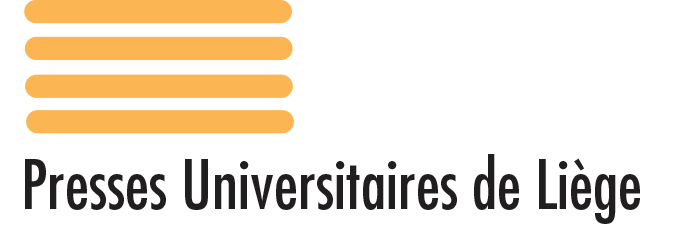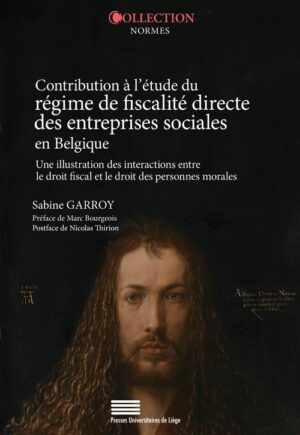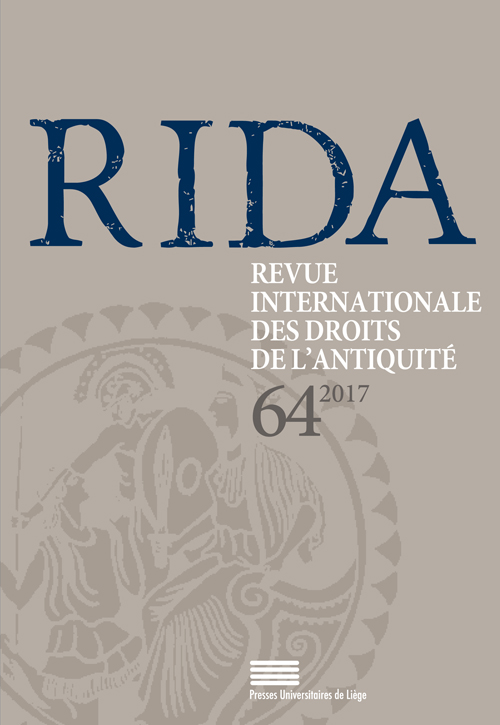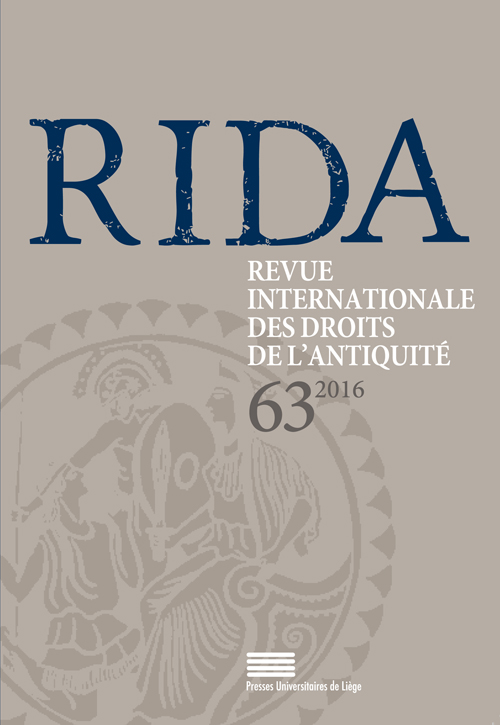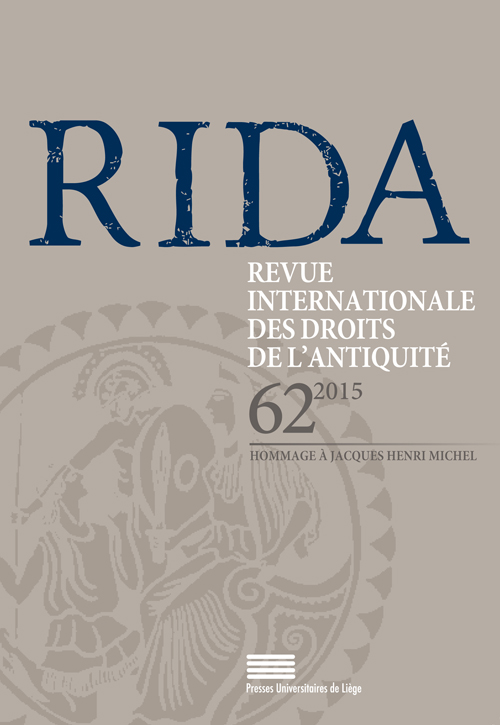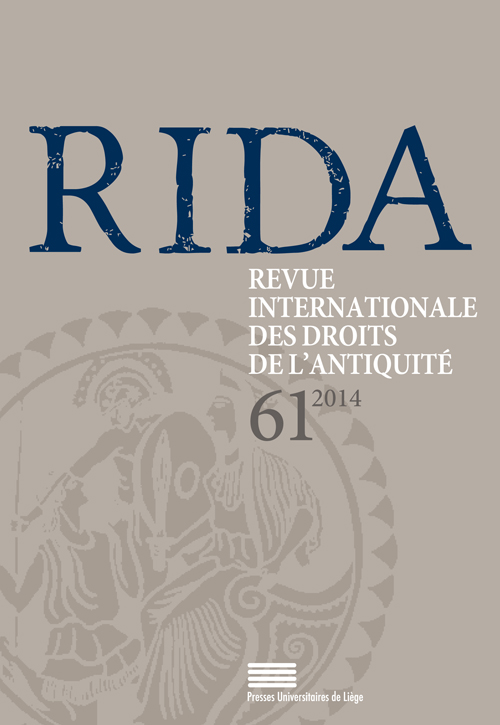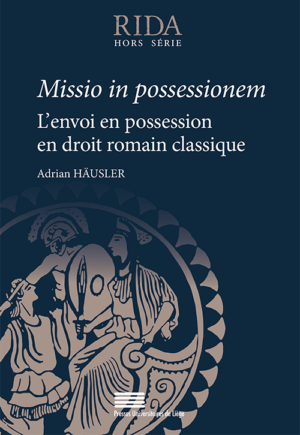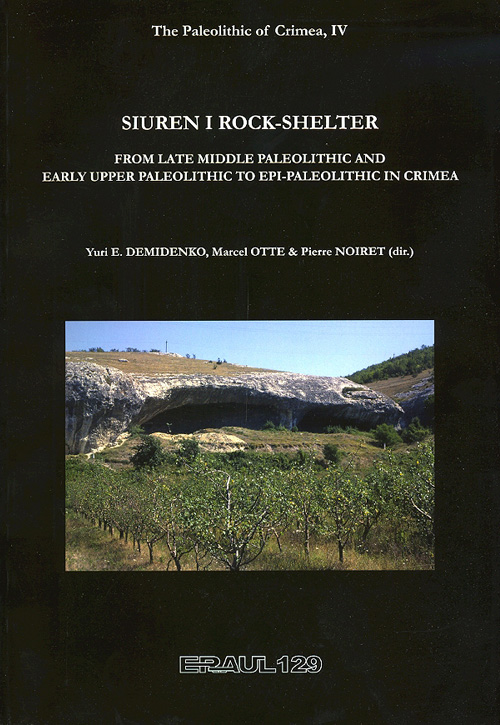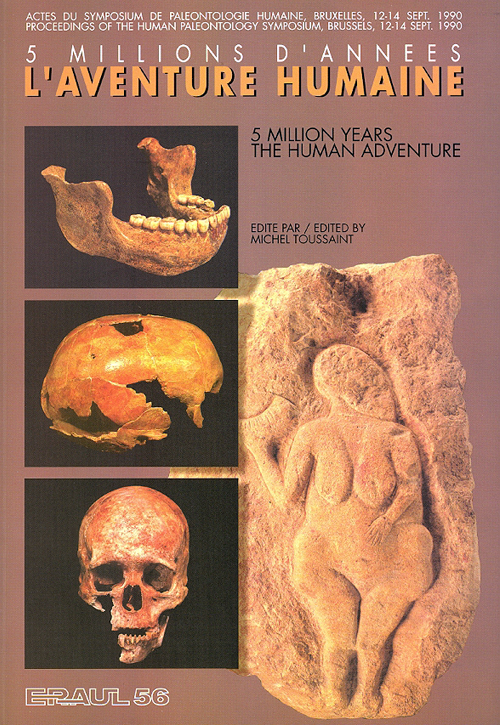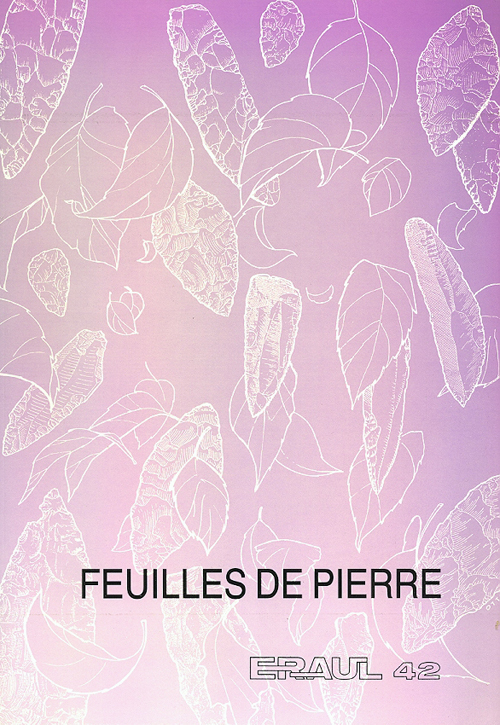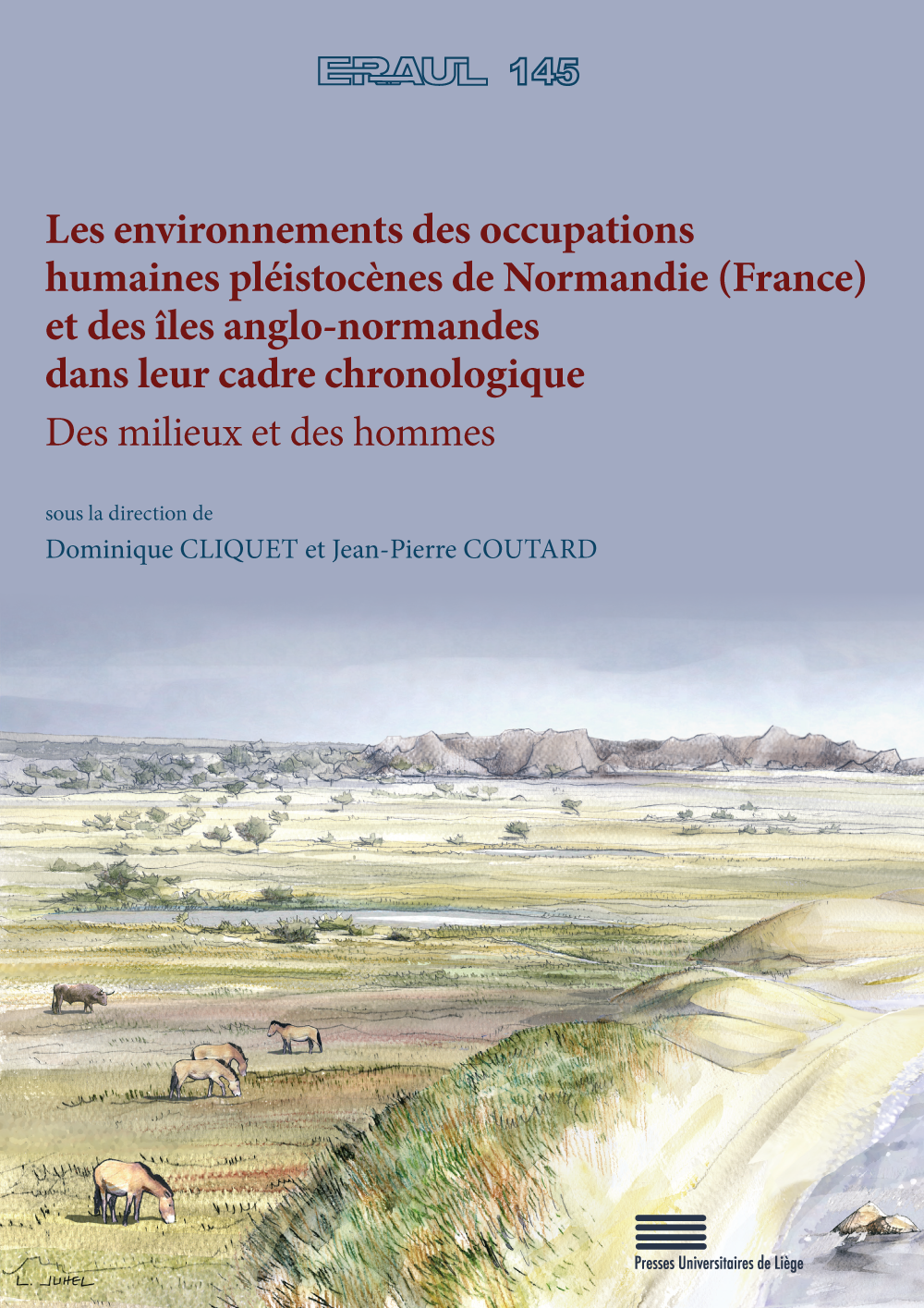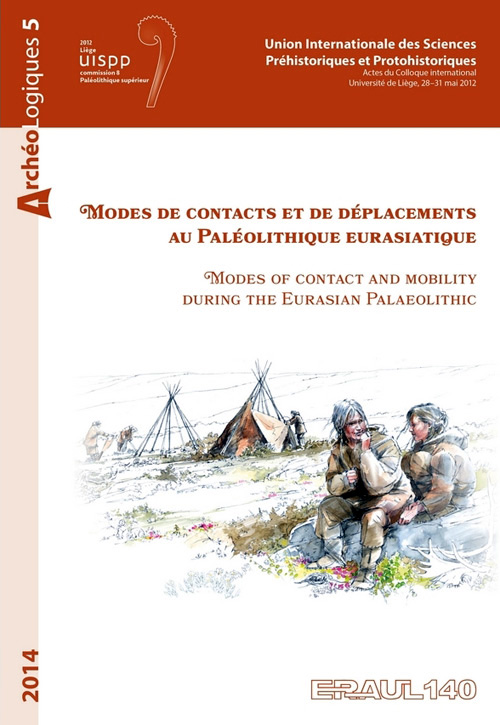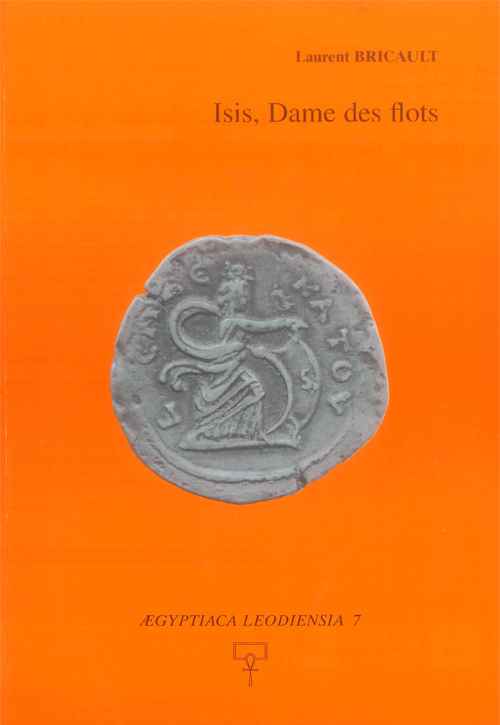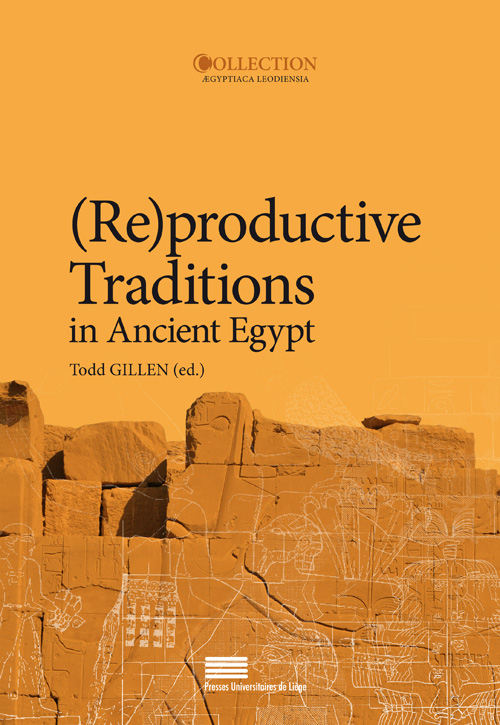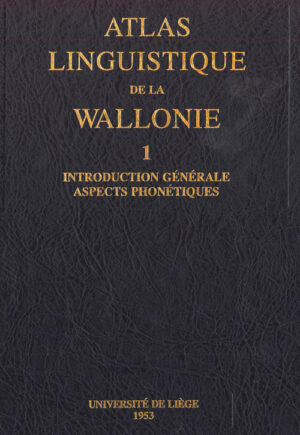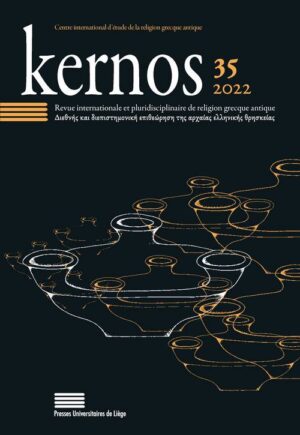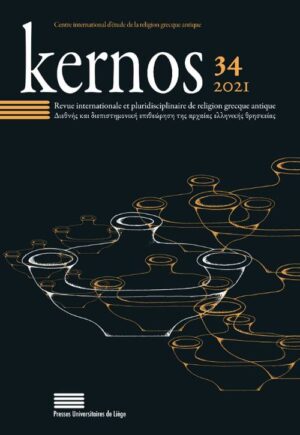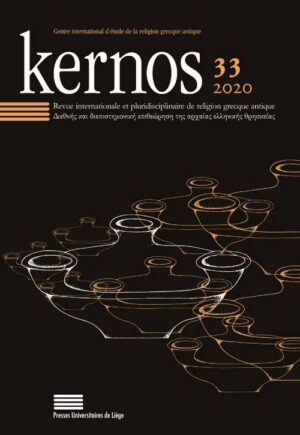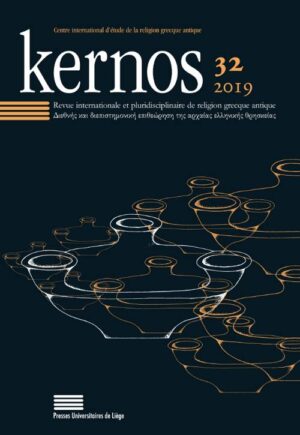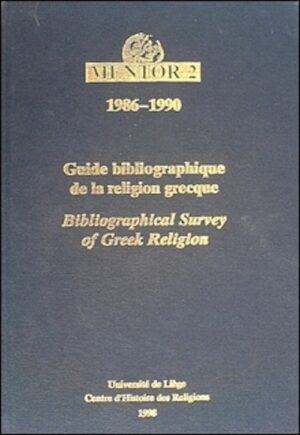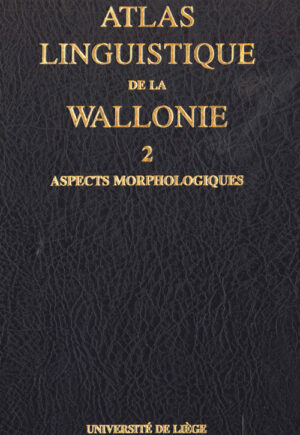-
Une illustration des interactions entre le droit fiscal et le droit des personnes morales Sabine GARROY Préface de Marc Bourgeois Postface de Nicolas Thirion Comment les revenus des entreprises sociales sont-ils traités par le droit fiscal belge ? Tel est l’objet principal du présent ouvrage. Les entreprises sociales ont ceci de particulier qu’elles se livrent à une activité économique tout en poursuivant une finalité sociale et en mettant en œuvre une gouvernance inclusive. À suivre certaines instances internationales (Union européenne et Organisation de coopération et de développement économiques), favorables au développement et à la pérennité de ces entreprises, ces dernières ne devraient pas être taxées comme les autres entreprises, dans la mesure où une telle charge fiscale pourrait, à long terme, menacer leur viabilité. Suivant ce postulat, pour favoriser l’expansion de l’entrepreneuriat social, le régime de fiscalisation des revenus devrait assurer à l’ensemble des entreprises sociales une charge fiscale moindre par comparaison avec celle pesant sur les autres entreprises. Il convient de vérifier si le système juridique belge est en adéquation avec ce postulat. Pour procéder à cette vérification, une démarche de type historique est privilégiée. Dans un premier temps, tourné vers le passé et le présent, une analyse généalogique tend à répondre à la question suivante : un cadre fiscal cohérent, valable pour toutes les entreprises sociales, et approprié, en tant qu’il aboutit systématiquement à une pression fiscale moindre sur les revenus de ces dernières, a-t-il été ou est-il, à l’heure actuelle, garanti en droit belge ? La réponse à cette question se révélant en fin de compte négative, il s’agit, dans un second temps, ouvert sur l’avenir, de répondre à une seconde question : puisqu’un cadre fiscal approprié et cohérent n’existe pas, pourrait-il être mis en place et, dans l’affirmative, selon quelles modalités ? Chemin faisant, ces questions, de prime abord circonscrites, en croisent d’autres, plus larges, en particulier celle des rapports qu’entretient le droit fiscal avec les autres branches du droit, notamment celle dédiée aux personnes morales. L’étude permet même d’affronter et de déconstruire l’un des mythes les plus enracinés de la culture juridique continentale : celui de la rationalité du législateur. Le sujet, apparemment technique, révèle ainsi le fonctionnement de quelques-uns des rouages les plus éprouvés de la machine juridique. Sabine GARROY est docteur en droit. Depuis 2021, elle est professeur de droit fiscal à l’université de Liège. Cet ouvrage est une version légèrement remaniée et mise à jour de sa thèse de doctorat.
-
par COLLECTIF
Sommaire
Droits de l’Orient méditerranéen Nicolas Forest, De l’incapacité des alieni iuris à recevoir à titre gratuit en droit perse sassanide Doris Forster, La lésion énorme en droit romain et l’ona’ah en droit juif
Droit grec Konstantinos Kapparis, The γραφὴ μοιχείας in Athenian legal procedure Carlo Pelloso, La ‘flessibilità’ nella persecuzione del furto in diritto ateniese: concorso elettivo di azioni o criterio di specialità?
Droit romain Federica Bertoldi, Forma, formalismo e negozi formali Francesca Del Sorbo, In personam servilem nulla cadit obligatio. La capacità d’agire degli schiavi tra regole civilistiche, diritto onorario e prassi negoziale Macarena Guerrero, La reconstrucción urbanística de una Roma en ruinas tras el incendio del año 64: el proyecto de Nerón en Tácito Anales 15,43 Francesca Lamberti, Convivenze e ‘unioni di fatto’ nell’esperienza romana: l’esempio del concubinato Paolo Marra, Un cas particulier de transfert de propriété à titre de garantie : la « Mancipatio Pompeiana » Joaquin Muñiz Coello, Sobre las doce tablas. Algunas propuestas historiográficas Renato Perani, Hypothecam in testamento dare. Sulla costituzione di garanzie reali mortis causa Aldo Petrucci, Les déposants face au risque de crise financière d’un banquier chez les juristes romains Elena Sanchez Collado, La responsabilité du negotiorum gestor dans la survenance du cas fortuit et les origines historiques de l’article 1891 du code civil espagnol Eltjo Schrage, Ungerechtfertigte Bereicherung: Einige Bemerkungen aus dem Bereich der vergleichenden Rechtsgeschichte Patrick Tansey, Publilius, Asprenas and Brutus: A note on D.3.1.1.5 Lothar Thüngen, Anmerkungen zun den Scholia Sinaitica Andreas Wacke, Das nach siegreich bestandenem Wettkampf zurückzuzahlende Athleten-Darlehen. Eine Entgegnung auf Éva Jakab Gianluca Zarro, “Sepulchrum”, “monumentum”, ed aree “adiectae”: elementi comuni e discipline differenziali
Chroniques
-
par COLLECTIF Sommaire Droit des papyrus L. Thüngen, Neuedition von PL II/38 aus einem griechischen Index zu Papinians libri definitionum Droit chinois G. MacCormack, Physical Injury and Insult in Early Chinese Law with Comparative Annotations from Other Early Laws Droit romain C. Amunategui, Market and Ownership in Iron Age Latium M.V. Bramante, A proposito di D.12.1.3 (Pomp. 27 ad Sab.): per una interpretazione del concetto di bonitas R. Hassan, Bees, Slaves, Emperors, Tyrants: Metaphors of Constitutional Change in Rome Between the Republic and the Principate A.R. Jurewicz, Bürgschaft eines Sklaven für seine Herrin? Bemerkungen zur fidepromissio servi in TP. 59 (=TPSulp. 58=TPN 48) C. Lázaro Guillamon, El silencio del demandado en el proceso civil: aproximación histórico-crítica al aforismo “quien calla, otorga” L. Radulova, Iura sepulcrorum nella Moesia Inferior: la realizzazione di un fenomeno romano in un ambito greco-trace C. Sardinha, Rechtsvergleichendes zur Sicherungsübereignung in der antiken Vertragspraxis I. Spruit, Aulus Gellius als Richter. Eine Betrachtung zu Gellius, Noctes Atticae XIV, 2 Droit byzantin M. Petrak, Nobile hoc Romani Imperii monumentum: Laudes imperiales in Byzantine Dalmatia Droit romain aux temps modernes O. Sacchi, La regula iuris e i casi perplexi di Leibniz: algoritmo di buona decisione o presidio di verità nel diritto? I. Sogut, Precautions against interventions creating environmental effects in Roman Law and its reflection of Turkish Law Chroniques
-
par COLLECTIF
Sommaire
Éditorial Hommage à Jacques-Henri Michel (L’Abrégé d’art militaire de Végèce) Avant-propos (Dominique Gaurier) Les traductions françaises de l’Abrege d’art militaire de Végèce (Étienne Famerie) Note sur le texte et la traduction (Étienne Famerie) Plan de l’oeuvre Édition critique et traduction (Étienne Famerie et Jacques-Henri Michel) Bibliographie sur l’Abrégé d’art militaire de Végèce (1981–2015) (Étienne Famerie) .
Droit romain Emanuela Calore, Volenti non fit iniuria: una regula romana? Giacomo D’Angelo, Vadimonium nossale ed exhibition «in eadem causa» Evelyn Höbenreich, Marginalia on Morals, Rhetoric, and Law. Apropos Sen. contr. 2.7 Aglaïa McClintock, Nemesi dea del νόμος. Modalita e simboli della repressione criminale nei primi secoli dell’impero romano Esteban Moreno Resano, La emision en Oriente de cinco leyes occidentales de Constantino Carlo Pelloso, Sul diritto del cittadino al processo popolare dalla caduta del regno al decemvirato legislativo Mariagrazia Rizzi, Aequum/iniquum esse nelle constitutiones principum di età severiana in materia contrattuale attraverso le testimonianze dei Digesta giustinianei Annamaria Salomone, Le donazioni inter virum et uxorem tra successio ed accessio possessionis
Chroniques
-
par COLLECTIF SOMMAIRE Droit grec M.L. Zunino, Parola del dio, scrittura del δᾶμος, norme panelleniche. Ripensando l’iscrizione elea IvO 7 Droit romain E. Chevreau, Étymologie juridique et regula iuris A. Corbino, Caso, diritto e regula. Limiti della funzione normativa del caso deciso nella visione romana D. Liebs, Das Rechtssprichwort Fiat iustitia et pereat mundus C.F. Amunátegui Perelló, The Decline of the Middle Class and the Fall of the Roman Republic J. Benke, “De emptore, qui non vult rem tollere”. Gedanken zu einigen Problemen des Gläubigerverzuges nach Pomp. D.19.1.9 L. De Maddalena, Liberti scribae N. Donadio, ‘Locus inferior naturaliter superiori servit’ di un’antica ‘regula iuris’ in tema di scolo dell’acqua piovana tra fondi attigui A. Grebieniow, La laesio enormis e la stabilità contrattuale Ph. Klausberger, Versionshaftung trotz Verlust? Nochmals zu D.15.3.17pr Ł.J. Korporowicz, Roman Tax Policy in Roman Britain O. Toro, L’arricchimento del creditore ai danni del debitore: riflessioni sul patto Marciano e sul divieto del patto commissorio Droit chinois G. MacCormack, The Evolution of the Law of Theft from the Western Zhou (ca. 1045 BCE–771 BCE) to the Tang (618–907 CE)
Réception du droit M.L. Martínez de Morentin, Sobre la construcción del principio pacta sunt servanda rebus sic stantibus, su aplicación a los contratos y estado actual de la cuestión
Chroniques M. Sievert, Anton Friedrich Justus Thibaut, Bürger und Gelehrter L. Labruna, Les règles du droit à Naples C. Masi Doria, Accueil de la Société à Naples J.-Fr. Gerkens, La SIHDA à Naples Xe Prix International de Droit Romain Gérard Boulvert -
L’envoi en possession en droit romain classique Adrian HÄUSLER Assurer la conservation de biens, faire pression sur un citoyen récalcitrant, punir un certain comportement, permettre l’exécution d’une prétention, voilà autant d’objectifs poursuivis par l’envoi en possession (missio in possessionem), une mesure emblématique du droit prétorien. Le présent ouvrage offre la première investigation complète sur une institution jusqu’ici souvent traitée de façon marginale dans la littérature juridique. D’abord conçue comme une saisie provisoire du patrimoine du débiteur dans le cadre de l’exécution forcée, la funeste mesure s’est assouplie et a investi l’ensemble de l’ordre juridique romain dans des domaines aussi variés que les droits des successions, de la famille ou du voisinage. Le recensement d’un large panel de sources, parfois regrettablement lacunaire, permet à l’auteur d’apporter un éclairage nécessaire sur l’existence et les modalités des différentes causes d’envoi en possession fixées ou non dans l’édit du préteur. À cet égard, une nouvelle reconstruction de portions de l’édit perpétuel se voit proposée. L’évolution de la terminologie juridique, la procédure applicable, les conséquences pour le débiteur ainsi que le régime de droits et d’obligations liant les parties durant l’envoi en possession font également l’objet d’une analyse approfondie. L’examen démontre que, malgré une grande diversité de cas d’application due au développement de la législation prétorienne et à la créativité des jurisconsultes, l’envoi en possession a maintenu un caractère uniforme en droit romain classique et constitue une institution fondamentale pour le fonctionnement de l’édifice judiciaire romain.
-
From Late Middle Paleolithic and Early Upper Paleolithic to Epi-Paleolithic in Crimea. [The Paleolithic of Crimea, IV] par Yuri E. DEMIDENKO, Marcel OTTE & Pierre NOIRET (dirs) Table of content Préface | Foreword | Marcel Otte The history of investigations at Siuren I and different interpretations of the site’s archaeological context | Yuri E. Demidenko Siuren I: excavation strategies and methodologies | Alexandre I. Yevtushenko† Siuren I: Stratigraphic and Archaeological Sequences for the 1990s Excavations | Alexandre I. Yevtushenko† Radiocarbon Dates for the Siuren I sequence | Yuri E. Demidenko & Pierre Noiret Zooarchaeological analysis of the faunal assemblages from Siuren I, Crimea (Ukraine) | Jessica Massé & Marylène Patou-Mathis Small Mammals from Paleolithic Site Siuren I | Anastasia K. Markova Snail Fauna Data from Siuren I | Constantine Mikhailesku The Worked Bone Artifacts from the Siuren I Rock-Shelter (Crimea): the 1990s Excavation | Natalia B. Akhmetgaleeva The Classification and Attribute Analysis System Applied to the Siuren I Lithic Assemblages | Yuri E. Demidenko Unit H: Lithic Artifacts | Yuri E. Demidenko & Victor P. Chabai Unit G: Lithic Artifacts | Yuri E. Demidenko & Victor P. Chabai Unit F: Lithic Artifacts | Yuri E. Demidenko & Victor P. Chabai Unit E-A: Lithic Artifacts | Yuri E. Demidenko Inter-Unit and Inter-Level Comparisons of Assemblages from the 1990s Units H, G and F | Yuri E. Demidenko Comparisons between the Siuren I Assemblages from the 1920s Lower and Middle Layers and the 1990s Units G and F | Yuri E. Demidenko Interpretation of the Middle Paleolithic Component in the Early Aurignacian Units H and G and the 1920s Lower Layer | Yuri E. Demidenko The Problem of Industrial Attribution of Artifacts from the Upper Cultural Bearing Deposits at Siuren I: 1920s Excavations Upper Layer and 1990s Excavations Units E-A | Yuri E. Demidenko The Siuren-I Aurignacian of Krems-Dufour Type Industries in the Context of the European Aurignacian | Yuri E. Demidenko & Pierre Noiret Small Laminar Blanks at Siuren I Rockshelter: Technological & Comparative Approach | Nicolas Zwyns The Siuren I Archaeological Industrial Sequence seen Through the Site’s Human Occupation Events | Yuri E. Demidenko Looking East | Marcel Otte Concluding Considerations | Yuri E. Demidenko Perspectives | Marcel Otte & Pierre Noiret References
-
Actes du symposium de Paléontologie humaine de Bruxelles (12-14 septembre 1990) par Michel TOUSSAINT (éd) Résumé indisponible.
-
Actes du colloque international de Cracovie (1989) par Janusz K. KOZLOWSKI (éd) Résumé indisponible.
-
Des milieux et des hommes Dominique Cliquet & Jean-Pierre Coutard
Après quarante années consacrées à l’étude des premiers peuplements de Normandie (Haute-Normandie, Basse-Normandie et îles anglo-normandes) et une vingtaine d’années de fonctionnement du projet collectif de recherche « Les Premiers Hommes en Normandie », nous devions procéder à la rédaction d’un bilan relatif aux occupations pléistocènes de « cette province ». Cet état de la recherche nécessite la rédaction, puis l’édition de plusieurs volumes visant à publier les résultats des études effectuées. Ce premier volume, consacré au cadre historique, environnemental et chronologique des occupations paléolithiques de Normandie (comprenant les ex-« Haute-Normandie » et « Basse-Normandie ») et des îles anglo-normandes, brosse les décors dans lesquels ont évolué les chasseurs — cueilleurs — collecteurs du Paléolithique et dans une moindre mesure du Mésolithique.
-
par Marcel OTTE & Foni LE BRUN-RICALENS (Coord.)
Table of content
Publication des actes du Colloque de la Commission 8 de l’UISPP, Liège, 29-31 mai 2012 Avec le Paléolithique supérieur d’Eurasie, les contacts territoriaux présentent une extrême extension, attestée par les matériaux et les entités culturelles. Quelles furent les traces de ces réseaux d’extension à longue distance et comment les interpréter ? Pourquoi furent-elles si abondantes et si nettes par rapport aux périodes précédentes et ultérieures ? Quels sont les modèles, actuels ou anciens, qui les justifieraient ? Quels furent les liens triangulaires qui expliquent l’extension de tels réseaux fondés sur un nouvel équilibre entre les paysages, les mythes et la démographie ?
With the Upper Palaeolithic of Eurasia, territorial contacts present an extreme expansion, attested by archaeological materials and cultural entities. What is the evidence for these long-distance expansion networks and how can it be interpreted? Why such evidence is so abundant and clear compared to preceding and subsequent periods? What are the current and former models that explain this expansion? What were the triangular links that explain the expansion of such networks based on a new equilibrium between landscapes, myths and demography?
Contributions réparties en six thèmes : Thème I : Asie Thème II : Europe orientale Thème III : Europe centrale Thème IV : Europe occidentale Thème V : Arts Thème VI : Débats généraux -
par Laurent BRICAULT 1. Jean WINAND, Le voyage d'Ounamon. Index verborum, concordance, relevés grammaticaux, 1987. 2. Jean WINAND, Études de néo-égyptien, 1. La morphologie verbale, 1992. 3. Pierre KOEMOTH, Osiris et les arbres. Contribution à l'étude des arbres sacrés de l'Égypte ancienne, 1994. 4. Juan Carlos MORENA GARCIA, Études sur l'administration, le pouvoir et l'idéologie en Égypte, de l'Ancien au Moyen Empire, 1997. 5. Dimitri LABOURY, La statuaire de Thoutmosis III. Essai d'interprétation d'un portrait royal dans son contexte historique, 1998. 6. Michel MALAISE & Jean WINAND, Grammaire raisonnée de l'égyptien classique, 1999. 7. Laurent BRICAULT, Isis, Dame des flots, 2006.
-
Proceedings of the conference held at the University of Liège, 6th-8th February 2013 par Todd GILLEN (ed.)
Tradition is central to Egyptology, and this volume discusses and problematises the concept by bringing together the most recent work on archaeological, art historical and philological material from the Predynastic to the Late Period. The eclectic mix of material in this volume takes us from New Kingdom artists in the Theban foothills to Old Kingdom Abusir, and from changing ideas about literary texts to the visual effects of archaising statuary. With themes of diachrony persisting at the centre, aspects of tradition are approached from a variety of perspectives: as sets of conventions abstracted from the continuity of artefactual forms; as processes of knowledge (and practice) acquisition and transmission; and as relevant to the individuals and groups involved in artefact production. The volume is divided into four main sections, the first three of which attempt to reflect the different material foci of the contributions: text, art, and artefacts. The final section collects papers dealing with traditions which span different media.
The concepts of cultural productivity and reproductivity are inspired by the field of text criticism and form common reference points for describing cultural change across contributions discussing disparate kinds of data. Briefly put, productive or open traditions are in a state of flux that stands in dialectic relation to shifting social and historical circumstances, while reproductive or closed traditions are frozen at a particular historical moment and their formulations are thereafter faithfully passed down verbatim. The scholars in this volume agree that a binary categorisation is restrictive, and that a continuum between the two poles of dynamic productivity and static reproductivity is by all means relevant to and useful for the description of various types of cultural production.
This volume represents an interdisciplinary collaboration around a topic of perennial interest, a rarity in a field increasingly fractured by progressive specialisation.
Todd GILLEN earned his PhD in Egyptology from Macquarie University, Sydney, and worked as a postdoctoral fellow for the Ramses project at the University of Liège. He has published on a variety of topics relating to ancient Egyptian text and culture of the New Kingdom. He is currently pursuing a career in psychology and counselling.
-
par Louis REMACLE Introduction générale. Aspects phonétiques, 100 cartes et notices
-
Éditorial
Hommage à André Motte
Actes du XVIe colloque international du CIERGA (partim), Des dieux, des jeux – et du hasard ? (en collaboration avec l’Advanced Grant ERC Locus ludi)
Véronique DASEN & Vinciane PIRENNE-DELFORGE, En guise d’introduction Philippe BORGEAUD, Quelques réflexions sur le rapport entre jeu et pratique rituelle (Résumé/Abstract) Jörg RÜPKE, Playing with the Gods: materiality of religious communication and ludic materiality in Cicero’s critique of divination (Résumé/Abstract) Irad MALKIN, Zeus, the Divine Lottery, and the Equality of Chance (Résumé/Abstract) Joachim Friedrich QUACK, Drawing Lots of the Gods in Roman Egypt (Résumé/Abstract) Arnaud MACÉ, Jouer avec la τύχη. Le jeu comme art de préparation aux coups durs (Platon, République X, 603e 4 –604d 5) (Résumé/Abstract) François LISSARRAGUE †, Joueurs ailés et incertitudes herméneutiques sur une coupe à Copenhague (Résumé/Abstract) Árpád M. NAGY, Erōs en kairō – un bas-relief à Budapest (Résumé/Abstract) Daniele MIANO, Fortuna, Games, and the Boundaries of the Divine: from Cicero to Boethius (Résumé/Abstract)Varia
Ivana & Andrej PETROVIC, Hesiod’s Religious Norms in Context: on Works & Days 724–760 (Résumé/Abstract) Panagiotis KONSTANTINIDIS, What Dreams May Come: an incubation relief from the Asklepieion of Epidauros (Résumé/Abstract) Ombretta CESCA, Cultes d’Iris en Grèce : un état de la question (Résumé/Abstract)Chronique des activités scientifiques
Epigraphic Bulletin 2019 Chronique archéologique Chroniques bibliographiques -
Éditorial
par André MOTTE et Vinciane PIRENNE-DELFORGEÉtudes
Nicolette PAVLIDES, Heroes, Politics, and the Problem of Ethnicity in Archaic Sparta (Résumé/Abstract) Maria MILI, Croesus’s Lost Shield and other Marvellous Objects (Résumé/Abstract) J.Z. VAN ROOKHUIJZEN, The Erechtheion on the Acropolis of Athens (Résumé/Abstract) Petra PAKKANNEN, Beyond Skin-deep: Considering the Pig in Ancient Greece through the Particularities of Its Skin (Résumé/Abstract) Yulia USTINOVA, “The Story of a New Name”: Cultic Innovation in Greek Cities of the Black Sea and the Northern Aegean Area (Résumé/Abstract) Athanassia ZOGRAFOU, Gods around the Grave: Hermes and Hecate in Early Attic Curse Tablets (Résumé/Abstract) Christopher A. FARAONE, The Lead Tablet from Tongres: Curse or Amulet? (Résumé/Abstract)Chronique des activités scientifiques
Epigraphic Bulletin 2018, par Angelos Chaniotis Chroniques bibliographiques -
Éditorial
par André MOTTE et Vinciane PIRENNE-DELFORGEÉtudes
Carman ROMANO, Works, Days, and Divine Influence in Hesiod’s Story World (Résumé/Abstract) Edoarda BARRA, Deux nouvelles interprétations du fr. 31 pour une Sappho « anthropologiquement correcte » (Résumé/Abstract) Sylvie VANSEVEREN, Carine VAN LIEFFERINGE, Αἰανής : parjure, démesure et justice divine (Résumé/Abstract) Naomi CARLESS UNWIN, Basket-Bearers and Gold-Wearers: Epigraphic Insights into the Material Dimensions of Processional Roles in the Greek East (Résumé/Abstract) Madeleine JOST, Alaya PALAMIDIS, Points de vue sur Lykosoura. Retour sur le sanctuaire de Despoina (Résumé/Abstract) Jacques DES COURTILS, The “Cupules” of the Herakleion of Thasos (Résumé/Abstract) Jérémy CLÉMENT, La tonte funèbre des équidés et le chagrin d’Alexandre. Origines et interprétations d’une pratique de deuil (Résumé/Abstract) Michael ZELLMAN-ROHER, More on the Tradition of Amulet Pattern-Books in Post-Ancient Copies? (Résumé/Abstract)Chronique des activités scientifiques
Epigraphic Bulletin 2017, par Angelos Chaniotis Chronique archéologique Chroniques bibliographiques -
Philippe BORGEAUD, Hommage à Marcel Detienne
Éditorial
par André MOTTE et Vinciane PIRENNE-DELFORGEÉtudes
Bartek BEDNAREK, Orpheus in Aeschylus and the Thracian child-eater on a hydria from the British Museum (Résumé/Abstract) Claudio BIAGETTI, Una menzione di Atena Archegetis in P.Hib. I 15. Note sull’epiteto e sul suo impiego ad Atene (Résumé/Abstract) Sonia DARTHOU, L’olivier, identité et rempart d’Athènes : un épisème de la cité ? (Résumé/Abstract) Julie BALÉRIAUX, Mythical and ritual landscapes of Poseidon Hippios in Arcadia (Résumé/Abstract) Hedvig VON EHRENHEIM, Causal explanation of disease in the iamata of Epidauros (Résumé/Abstract) Dennis D. HUGHES, The Cult of Aratus at Sicyon (Plutarch, Aratus, 53) (Résumé/Abstract) Stefano CANEVA, Variations dans le paysage sacré de Pergame : l’Asklépieion et le temple de la terrasse du théâtre (Résumé/Abstract) Alaya PALAMIDIS, Des souris et des hommes. Une réinvention érudite du culte d’Apollon Smintheus à l’époque hellénistique ? (Résumé/Abstract) Denis ROUSSET, Géographie, paléographie et philologie. Note sur un lieu de culte de Déméter (Résumé/Abstract) Anna ANGELINI, Naming the gods of the others in the Septuagint: lexical analysis and historical-religious implications (Résumé/Abstract) Corinne BONNET, Sylvain LEBRETON, Mettre les polythéismes en formules ? À propos de la Base de Données Mapping Ancient Polytheisms (Résumé/Abstract)Chronique des activités scientifiques
Epigraphic Bulletin 2016, par Angelos Chaniotis Chroniques bibliographiques -
Guide bibliographique de la religion grecque antique. Bibliographical Survey of Greek Religion Il s’agit de la suite du Supplément 1 (1992). Le prix combiné des deux volumes est de 175 Euros. Voir la présentation du programme Mentor.
-
par Louis REMACLE Aspects morphologiques, 122 cartes et notices.
